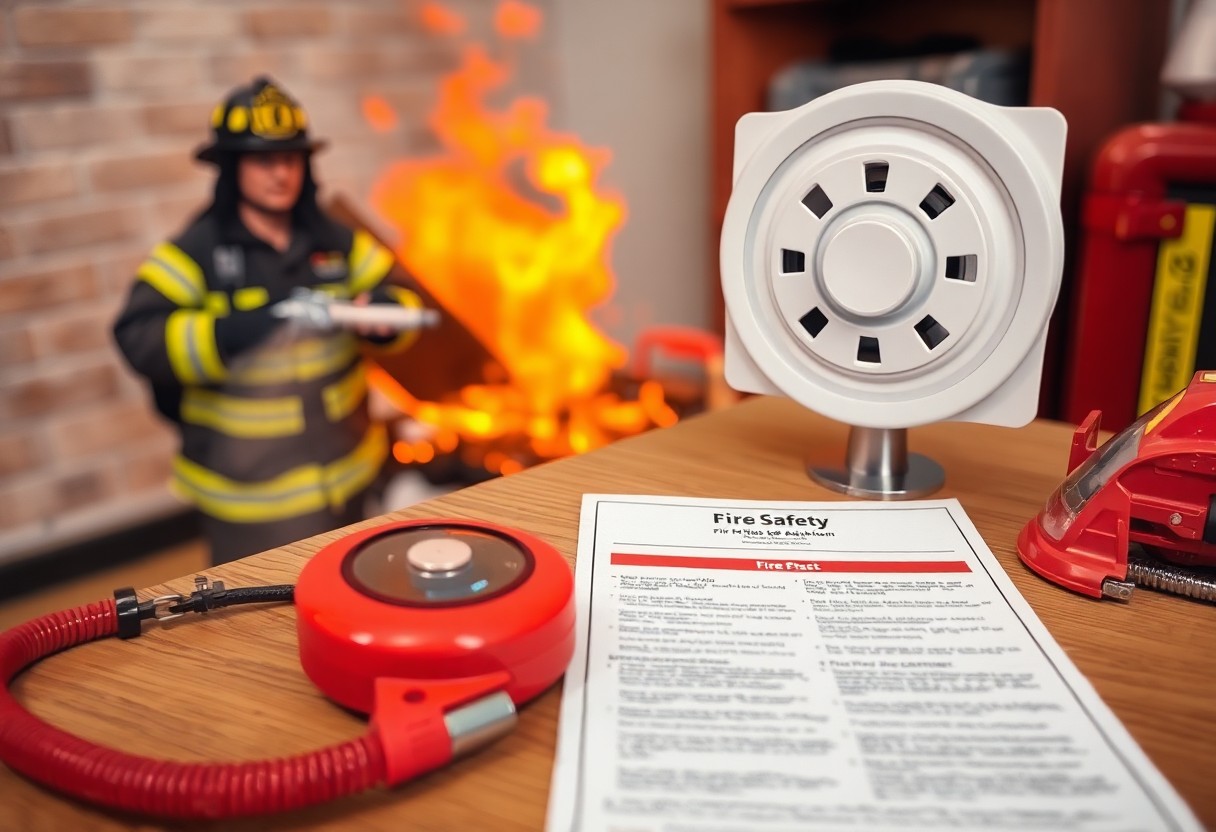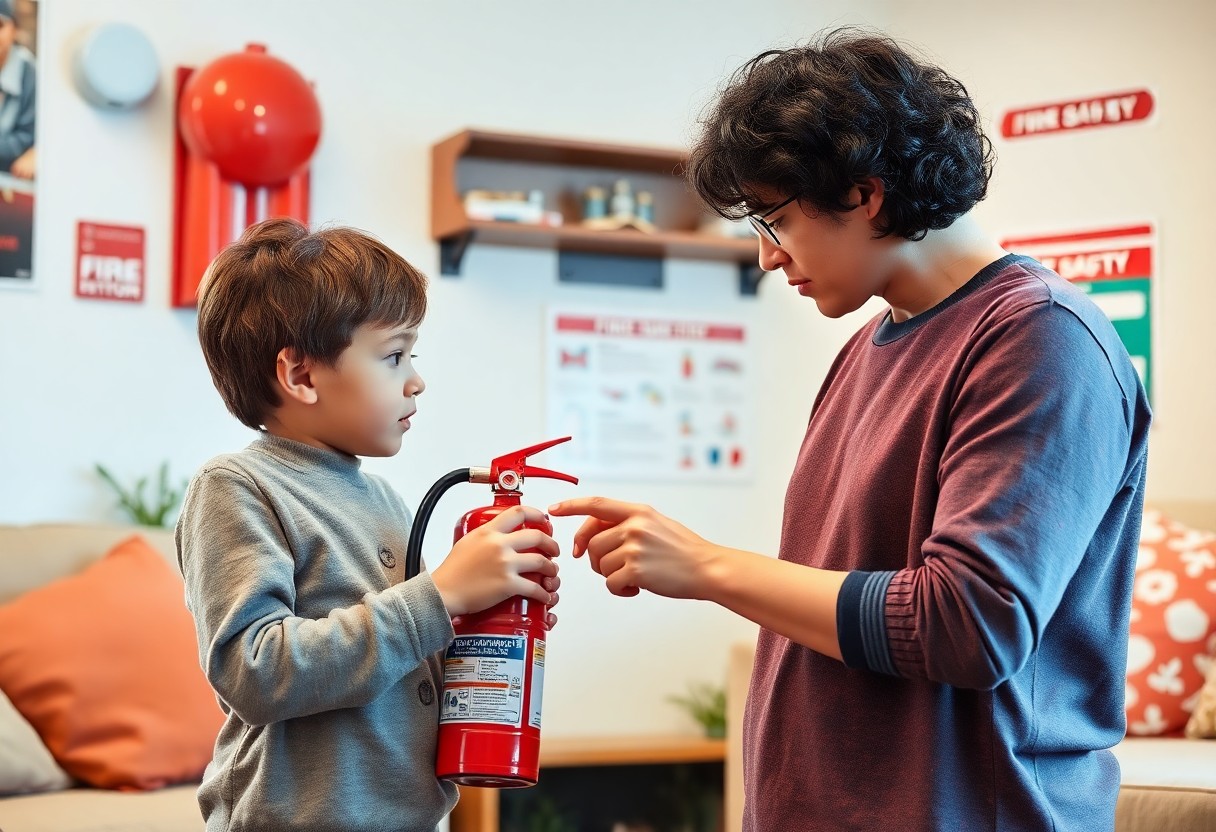Fire safety is often misunderstood, leading to dangerous misconceptions that can put you and your loved ones at risk. You may believe certain myths about fire prevention and response, but it’s necessary to separate fact from fiction. In this post, you’ll discover the truths behind common fire safety myths and learn practical measures to keep you and your environment safe. Equip yourself with accurate information, so you can confidently face fire-related challenges in your home and workplace.
Common Fire Safety Myths
Although fire safety is often talked about, many people still hold onto common misconceptions that can put lives at risk. Understanding these myths is necessary for ensuring you and your loved ones are truly protected. By debunking these popular beliefs, you can take informed action that will enhance your safety in the event of a fire.
Myth: Smoke Alarms are Optional
Alarms are not just optional; they are necessary life-saving devices. In fact, having working smoke alarms reduces the risk of dying in a house fire by nearly half. It’s important to install them in every sleeping area and check the batteries monthly to ensure they’re functioning properly. Your safety and that of your family depend on being proactive with this simple step.
Myth: You Can Fight a Fire Yourself
About the idea of battling a fire on your own, many people underestimate just how dangerous a fire can be. Even small fires can spread quickly, and smoke inhalation poses serious health risks. It’s necessary to prioritize your safety; grabbing the nearest fire extinguisher isn’t always the best option. Always have an escape plan and call the fire department instead of attempting to douse the flames yourself.
To truly grasp the dangers of fighting a fire yourself, consider the risk factors involved. Fires can escalate rapidly, generating toxic smoke and posing a threat beyond the flames. If a fire is growing, your focus should be on evacuating and notifying the fire department, rather than trying to extinguish it. Be aware of your home’s layout and have a practiced escape route – your life is worth more than any property. Equip yourself with knowledge and tools that safeguard rather than risk your safety.
The Truth About Smoke Alarms
It is imperative to understand that smoke alarms are your first line of defense in a fire emergency. Many people believe that once installed, these devices are maintenance-free, but this myth can be deadly. Regular testing and proper maintenance ensure that your smoke alarms function effectively, providing the early warning needed to protect you and your family from smoke and fire hazards.
Importance of Regular Testing
For optimal safety, you should test your smoke alarms at least once a month. Regular testing assures you that the alarms are functioning properly and won’t fail when you need them most.
Types of Smoke Alarms
Against common belief, not all smoke alarms operate the same way. Understanding the different types can help you choose the best one for your home. Here’s a breakdown:
| Ionization Smoke Alarms | Best for detecting fast, flaming fires. |
| Photoelectric Smoke Alarms | Better for smoldering fires. |
| Dual-Sensor Alarms | Combination of ionization and photoelectric technologies. |
| Smart Smoke Alarms | Connects to your smartphone for remote alerts. |
| Battery-Operated vs. Hardwired | Consider installation preferences and reliability. |
In fact, choosing the right smoke alarm for your home can greatly impact your safety. Each type has its strengths and weaknesses, so consider these points:
- Think about the layout of your home.
- Evaluate your family’s needs.
- Look for combination alarms for maximum protection.
- Choose models with a long-life battery.
- After you’ve made your decision, test the alarm regularly.
Understanding Fire Extinguishers
While fire extinguishers are vital tools for your safety, it’s imperative to understand how they operate and when to utilize them effectively. Knowing the types of extinguishers and their specific applications can make a significant difference in containing small fires before they escalate. By familiarizing yourself with this information, you empower yourself to act efficiently in an emergency situation, ensuring the safety of yourself and those around you.
When to Use a Fire Extinguisher
Behind every effective fire response is the critical knowledge of when to use an extinguisher. You should only attempt to use a fire extinguisher if the fire is small, contained, and you have a clear escape route. If the flames are large, or if smoke fills the room, evacuating the area and calling emergency services is always the safest choice.
Different Classes of Fires
At the heart of fire safety is the understanding that different fires require different extinguishing methods. Fires are categorized into classes based on the materials that are burning, and knowing these classifications is imperative when selecting the right extinguisher for the job.
The classes of fires include Class A (ordinary combustibles like wood and paper), Class B (flammable liquids such as gasoline and oils), Class C (electrical fires), Class D (flammable metals), and Class K (cooking oils and fats). Each class requires a specific type of extinguisher; for example, using water on a Class B or C fire can worsen the situation. By understanding these classes, you enhance your ability to respond appropriately and safely during a fire emergency.
Evacuation Plans: Why They Matter
Not having a solid evacuation plan can put you and your loved ones at risk during a fire emergency. An effective evacuation plan serves as a roadmap that guides you safely out of your home or workplace, ensuring you know the quickest and safest exits. It’s important to prepare in advance, so when the time comes, you can respond quickly and efficiently, minimizing panic and chaos in a stressful situation.
Creating an Effective Plan
Evacuation plans should be clearly outlined, detailing all possible escape routes from each room in your home. Ensure every individual knows the primary and secondary exits, and consider specific needs, such as accommodating children or individuals with disabilities. Designate a safe meeting point outside where everyone can gather, allowing you to verify that everyone has evacuated safely.
Practicing Drills Regularly
Before a fire emergency strikes, conducting regular drill practices can help you and your household stay prepared. Engaging in these drills allows you to familiarize yourself with the evacuation plan, building confidence in your ability to act quickly. Make it a point to schedule these drills at least twice a year, incorporating different scenarios to simulate real-life situations and ensure everyone is aware of their role.
Indeed, practicing drills regularly not only reinforces the evacuation plan but also helps reduce anxiety and uncertainty about what to do during a fire. As you run through the motions, you’ll identify any areas needing improvement, such as blocked exits or confusion about the meeting point. This proactive approach increases your family’s readiness and instills an understanding of the urgency of fire safety, enhancing your ability to react calmly in an emergency.
Fire Safety in the Home
Keep your home safe by implementing effective fire safety measures. Ensuring that your smoke alarms are functioning, establishing an escape plan, and regularly reviewing fire safety practices can significantly reduce the risks associated with fire. Taking these preventative steps helps create a safer environment for you and your family, making fire emergencies more manageable should they arise.
Strategies for Fire Prevention
On a daily basis, you can minimize the risk of fire by following simple strategies. Make sure to keep flammable materials away from heat sources, regularly check your appliances for potential hazards, and avoid overloading electrical outlets. Additionally, teach your family about fire safety and establish clear evacuation routes to ensure everyone knows what to do in case of an emergency.
Importance of Carbon Monoxide Detectors
Between the dangers of fire and carbon monoxide exposure, it’s vital that you protect your home with proper alarms. Carbon monoxide detectors are vital because they alert you to dangerous gas levels before they become life-threatening. Installing these detectors on every level of your home greatly increases your safety, giving you peace of mind.
This simple yet effective device is paramount for preventing carbon monoxide poisoning, which can often go undetected due to the gas being odorless and colorless. Placing detectors outside sleeping areas and in high-risk areas, such as kitchens and garages, ensures you’re alerted to any potential dangers. Check the batteries regularly and replace devices every five to seven years to ensure they function correctly, safeguarding you and your loved ones from harm.
Special Considerations for High-Risk Situations
Once again, understanding the specific risks associated with certain environments can significantly enhance your fire safety strategy. High-risk situations, such as those in high-rise buildings or rural areas, require tailored approaches to ensure your safety and readiness. Familiarizing yourself with these unique challenges allows you to better prepare and respond effectively in an emergency.
Fire Safety in High-Rise Buildings
Above all, when living or working in high-rise buildings, it’s vital to be aware of the specific fire safety protocols in place. Elevators can become inoperable during a fire, so familiarize yourself with the nearest stairwells and ensure that you follow the building’s evacuation plans. Regular fire drills are important for practicing your response in such scenarios.
Living in Rural Areas
Among the unique challenges of rural living is the increased risk of wildfires, which can spread rapidly due to dry conditions and dense vegetation. Ensuring your property is defensible through proper landscaping and creating a buffer zone around your home is important for fire safety.
For instance, maintaining a clear zone of at least defensible space around your home can significantly reduce the risk of fire damage. You should regularly clear away brush, dead leaves, and other flammable materials, while also opting for fire-resistant building materials when possible. Being aware of local fire bans and weather patterns further equips you to protect your home and family during fire season. Taking proactive measures can help you stay safe in rural areas prone to wildfires.
Summing up
Considering all points, it’s vital for you to separate fire safety facts from myths to effectively protect yourself and your loved ones. Understanding that smoke inhalation is more dangerous than flames and that home fires can occur even when you’re not cooking can dramatically improve your preparedness. By debunking these common misconceptions, you empower yourself to take the necessary safety precautions, ensuring your home and family are adequately protected against the risk of fire. Stay informed, stay safe, and make fire safety a priority in your everyday life.


